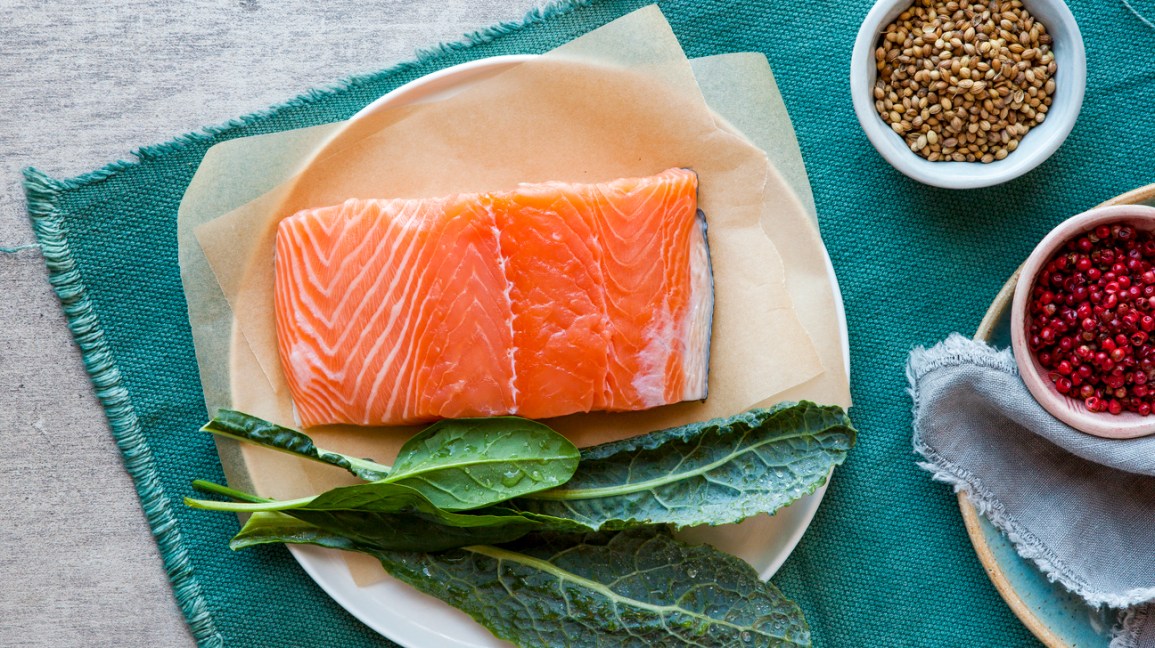
You can get a great workout with low impact that burns 400 to 600 calories each hour by taking a spinning class. These classes are a great substitute for strength training and are a great way to lose weight. A spin class is a great option because it focuses on movement. Continue reading to learn more. This article will help you book your next spin class.
A spin class burns between 400 and 600 calories an hour
A spin class may be the best way to lose weight. Spinning not only increases cardiovascular health but it also helps you lose weight and burn fat. Even though spinning may not be the best exercise, it can provide many other benefits. It can improve your body composition and reduce your body fat. It's a great way to have fun with friends and listen to some amazing music.
Depending on the type of spin class you choose, you can expect to burn between 300 and 600 calories per hour. The harder the class is, the more calories you'll burn. This is especially useful if you have trouble staying on track during a 30-minute class. Start slow and increase intensity over the 30-minute class. The type of spin class that you are taking will affect the intensity. A 45-minute class will generally result in you burning between 400 and 600 calories.

It's a low-impact workout
A spin class is the perfect way to get your cardiovascular workout while avoiding the impact of running. It is great for those who have suffered from orthopedic injuries or older people because it has low impact. You can adjust resistance so you can exercise at a moderate pace and not strain your joints. You may be amazed at the many benefits of spinning. You can give spinning a go to find out if it is for you.
Spin classes not only provide a great cardio workout, but they also improve circulation. Spin classes improve mood, stamina as well as prevent chronic diseases. You will not only get your daily exercise, but you'll also be able to burn hundreds of calories (up to 600). A spin class is easy to fit into your busy schedule. You can also take a spin class if you don't have the time to ride outside.
It can be used as a substitute for strength training
Many people don’t realize that they can work out without going to the gym. Strength training can help build muscle and reduce injury risk. Strength training isn't the only exercise that can build muscles. Many people use it to bulk up. However, if you are not a regular gymgoer, it is best to visit a gym to get started.
Strength training is a proven method to build muscle mass. It can be intimidating for those just starting out, as there are so many different forms. Traditional strength training involves lifting weights. It is also associated with body builders. Functional strength training is based on your body weight and small pieces or equipment that improves everyday movements. A full body workout should include multiple muscle groups.

It can help you lose weight
The American Sports Commission stated that indoor cycling can be as effective as walking for up to 600 calories per hour. This is more than walking or aerobic exercise, but it is still important to understand your body and weight before you start an exercise program. Adults are encouraged to exercise at least 150 minutes each week, according to the government. In other words, a 30-minute spin class can help you lose up to one pound of fat per month.
Spinning has another advantage: it will strengthen your heart. Spinning is great for losing weight. A personal trainer can help you make your workout more enjoyable and improve your form. These trainers can give you recommendations on which exercises are best for your body type and fitness level. You'll be able to see your results faster and see your results sooner than you thought.
FAQ
What is the best way to exercise when you are busy?
Doing exercises at home is the best way to stay in shape. You don't need to join any gym. You can perform simple exercises at your home without needing expensive equipment.
You will need a pair, mat, chair, timer, and some dumbbells.
Your most important goal is to keep up your fitness routine. You may lose motivation if you skip a few days.
A great way to start off would be to try lifting weights three times per week. These could include push-ups/pull-ups/squats, push-ups/pull-ups or dips/curls.
Once you are proficient in these movements, you will be able to do other types of exercise, such as running, jumping, skipping and yoga, pilates, dancing, swimming, weight training and tennis.
Make sure you choose the right exercise program for your needs. Avoid exercises that demand too much energy if you work long hours.
If you're a night owl then it is better to exercise in the evening than in the morning.
Pay attention to your body. Don't be afraid to stop when you get tired.
What foods help me lose weight faster?
You can lose weight more quickly by eating fewer calories. There are two ways to do this:
-
Reduce the calories you eat each day.
-
You can burn more calories through exercise.
It's not difficult to cut down on the amount of calories you eat. There are calorie-laden fast food options all around us. Here's a list to help you shed those extra kilos.
-
Beans are high on fiber and protein. They have very little fat making them a great option for dieters trying to reduce their caloric intake.
-
Oatmeal has low calories, but high levels of nutrients such as magnesium and potassium. Oatmeal has less sugar than other cereals.
-
Eggs are high on cholesterol and protein. Eating eggs at least twice a week can increase your metabolism, which helps you burn more calories.
-
Whole grain bread can reduce hunger pangs, so you might feel fuller for longer.
-
Dark chocolate is full of antioxidants. Flavonoids have been linked to lower blood sugar and improved heart health.
-
Cottage cheese is full of calcium, which helps build strong bones. Cottage cheese is also high in calcium, which aids in bone strength.
-
Omega-3 fatty acid rich salmon is good for your brain and cardiovascular health.
-
Green tea is rich in catechins, compounds which fight cancer and increase metabolism.
-
Broccoli, a rich source of folic acid, is great for lowering homocysteine levels. A higher risk of developing heart disease and stroke is associated with high homocysteine levels.
-
Yogurt is a great way to add probiotics into your diet without loading up on added sugars. Probiotics play an important role in digestive health.
-
Berries are a tasty snack that is also nutritious. All of these are excellent sources for vitamins and minerals, including blueberries, strawberries and blackberries as well as raspberries and cranberries.
-
Avocados are high in healthy fats. A half avocado contains 80 calories and plenty of fiber.
-
Nuts are a delicious snack option and a great source protein. Almonds, cashews, hazelnuts, pecans, walnuts, and pistachios are all great choices.
-
Sweet potatoes are another starchy root vegetable rich in beta carotene. It makes your skin shine. Because they have higher levels of beta carotene, the orange sweet potatoes are more beneficial than regular sweet potatoes.
How often do people fast?
A majority of ketogenic dieters fast one week. However, there are some who fast twice per week. And others fast three times per week.
There are many lengths to fasting. Some fast for 24 hours while others fast for 48.
Some people go on for more than 72 hours. These extreme cases are rare.
Why exercise is important to weight loss
The human body can be described as an amazing machine. It was created to move. Move your body to stay healthy, whether you are running, swimming, biking or lifting weights.
Exercise also burns calories and improves muscle tone. This will make you feel healthier both mentally and physically. Many people have heard the phrase "exercise is important to weight loss." But what does it do?
-
Exercise can increase metabolism. When you're active, your body will use energy. When you move, your heart beats quicker, blood flows to your muscles, oxygen is absorbed by your lungs, and blood flows faster to your muscles. These activities all require energy. Your metabolic rate increases, which means you'll burn more calories while exercising. The amount of energy that your body burns during exercise is called the "burning calories".
-
Exercise reduces appetite. If you eat less while you are working out, you will naturally eat fewer calories throughout the day.
-
Exercise builds strength. Muscle tissue uses more energy than fat tissue to function. To maintain your current weight, you'll need less calories if muscle mass is increased.
-
Endorphins are released when you exercise. Endorphins can make you happy. They are released into your bloodstream when you exercise. Endorphins are known to block pain signals from your brain. This gives you a feeling of well-being.
-
Exercise boosts self-esteem Regular exercise leads to higher self-esteem. This leads to healthier lives.
If you want to lose weight, start with small changes. Consider adding these tips to your daily routine.
How long should I do Intermittent fasting to lose weight?
It is not as easy as you think. A number of factors need to be considered when determining how many days of fasting are needed for optimal fat loss. These factors include:
-
Your age. You may find intermittent fasting too difficult if you're younger (under 40) because you have less time between fasts. If you are older than 60, you might find it difficult to maintain a prolonged period of daily fasting.
-
Your current body composition. If you already have a lot of muscle mass, you'll likely benefit most from longer periods of fasting. Shorter fasting might be more appropriate for you if you have less muscle mass.
-
How active you are. Exercise regularly and you may need to extend the fasting window in order to get enough sleep between workouts.
-
Your health history. Patients with certain medical conditions, such as heart disease, diabetes, or cancer, may need additional fasting monitoring.
-
How do you handle stress? Stress can often lead to us eating more. You may need to extend your fasting times in order to avoid this problem.
-
Your diet. Certain diets, like ketogenic diets, may require even longer fasting periods.
-
Your quality of sleep. Also, a lack of sleep has been linked with increased appetites and decreased metabolism. It may take some trial and error before you find the right combination.
-
Your daily intake of protein. Protein helps stabilize blood sugar levels, which means that eating more protein could potentially lead to lower insulin levels. This will allow you to fast longer.
-
People who want to gain weight or lose it will need to fast for longer periods of time than those trying to lose.
-
What percent of your daily calories are you consuming during your fasting time? You may lose more weight if you eat fewer calories each day than if you eat more.
-
Your overall fitness level. The metabolic rate of fast people who are fit is higher, which means they burn more calories each day.
-
Your gender. Men are more hungry than women so they may have to fast for longer periods. Women are more likely to have smaller appetites and may need to fast only 20-30 minutes every day.
-
Your lifestyle. Do you get enough physical activity? Do you do a lot of exercise each week? Is your job a long, sedentary one? All these factors can have an impact on how much time you should speed.
-
How much money do you spend on food? It doesn't always mean that you should spend a lot of money on groceries if you eat healthy foods. Whole grains can be replaced by white bread, fruits can replace candy bars, and lean cuts of meat can be used to save money.
-
How important it can be to control your appetite. You don't have to skip meals if you don’t want to.
What Amount of Weight Can You Lose In A Week?
Your current body fat percentage will determine how much weight you can lose. The first thing to do is to calculate how much weight you want to lose and then find out what your BMI (Body Mass Index) is. Your BMI (Body Mass Index) tells you how much weight should be lost to reach your goal. If your BMI is 25 or greater, you're overweight. If your BMI exceeds 30, you may be obese.
If you are 200 lbs, your BMI will be 28.7. To reach a healthy weight, you would need to lose 70 pounds. To see if you're overweight, visit www.healthyminds.com/bmi/.
Once you know your BMI, this formula will allow you to determine how many pounds per week you'll be able to lose.
(Your Goal Weight - Current Weight)/BMI * 7 Number Of Pounds Lost Per Week
To lose 50 pounds in a month, you would need to exercise for 2 weeks. That's 56 days divided by 7 pounds per day. This works out at 8.3 pounds per week.
You could also try this calculator from www.weightlosscalculator.net. It will give you an approximate estimate of the calories you need to lose 1 pound each week.
What effect does intermittent fasting have on my sleep?
Yes, intermittent fasting can have an impact on your sleep. Your hunger hormones rise when you skip meals. As a result, you may find yourself waking up at night.
Experts advise skipping breakfast. Experts recommend having a light snack before going to bed.
If you're still hungry after this snack you can have a small meal right before going to sleep.
But remember not to overeat. You'll gain weight, not lose it.
Statistics
- According to a study sponsored by the American Council on Exercise, a person weighing around 140 pounds (64 kg) would burn 108 calories at a 30-minute beginner's Pilates class or 168 calories at an advanced class of the same duration (26). (healthline.com)
- According to Harvard Health, it's estimated that a 155-pound (70-kg) person burns around 167 calories per 30 minutes of walking at a moderate pace of 4 mph (6.4 km/h) (5). (healthline.com)
- According to Harvard Health, it's estimated that a 155-pound (70-kg) person burns roughly 112 calories per 30 minutes of weight training (5). (healthline.com)
- It's estimated that half of all American adults attempt to lose weight every year (1Trusted (healthline.com)
External Links
How To
How to lose weight quickly and without doing any exercise
You can lose weight quickly by eating less calories than what you burn. This will encourage your body's ability to use fat stores as energy. In order to get enough calories your body will start to degrade muscle tissue. This can lead to some muscle loss. While you can still lose weight, if your diet doesn't include exercise, you'll likely lose even more muscle mass.
The key to losing weight fast without working out is to reduce your calorie intake. It is common for people to believe that they must cut down on their food intake in an effort to lose weight. In order to lose weight you should eat less calories than you burn. What should you eat daily? It depends on how much you exercise each day. For example, a runner who walks 3 to 5 miles per day would only require 2,500 calories daily. One who sits at the desk all day would require 1,600 calories daily. Someone who exercises (e.g., lifting weights) daily would need around 1,600 calories.
When you want lose weight, it is important to cut down on your caloric intake. Many people think that they should eat less food because they feel like they're starving themselves. However, this is false. Your body doesn't care whether you're hungry or not; it just wants to function properly. In order to lose extra weight, it is essential that you keep track of how many calories you consume. Many online apps allow you to track your calorie intake. You can use these apps to monitor your calorie intake, such as MyFitnessPal, Calorie Counter and LoseIt!